Potez 25 A2/B2
Hispano
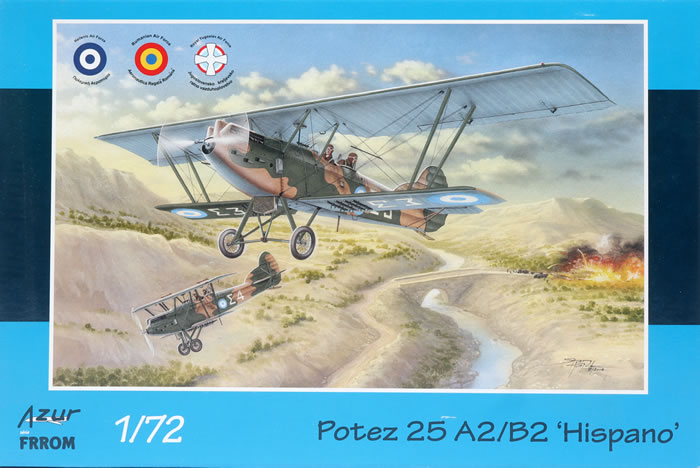
Azur FRROM, 1/72 scale
S u m m a r y : |
Catalogue Number: |
Azur FRROM Kit No. FR0037 - Potez 25 A2/B2 Lorraine |
Scale: |
1/72 |
Contents & Media |
Details below. |
Price: |
£30.99 EU Price (£25.83 Export Price) plus shipping available online from Hannants |
Review Type: |
First Look. |
Advantages: |
High quality mouldings; good detail, nice surface textures. |
Disadvantages: |
Limited run nature will require a bit more attention. |
Conclusions: |
This is a very nicely detailed kit of an interesting aircraft type that saw service with a wide range of countries. The limited-run nature of the kit along with the individual struts and rigging means that this kit will be best suited to experienced biplane modellers, but with time and care you will have an impressive and attractive result. |
Reviewed by
Brett Green

HyperScale is proudly sponsored by
Squadron.com
Henry Potez created the Société des Avions Potez in 1921 after working with Marcel Bloch in the S.E.A. during WWI. He assigned the design of the Potez 25 to Louis Coroller. Of mixed wood & metal construction and powered by a 450 ch Lorraine-Dietrich 12 Eb engine, the Potez 25 prototype is thought to have first flown early in 1925.
The first prototype (25.1) was transferred to S.T.Aé in 1925 for testing, whilst an unarmed prototype (25.2) made a tour of European countries to demonstrate the viability of the design. This indicated the need for some modifications, the most significant being an increase of the wingspan to 14.14 m.
The Potez 25 was one of the most widely built French aircraft between the World Wars. Most aircraft were powered by Lorraine 12 Eb, Hispano-Suiza, or Gnome-Rhône (a licence-built Bristol Jupiter) engines, whilst some used Renault, Farman, or Salmson power. Either Potez or Messier landing gear was fitted and three styles of tailfins employed. This very versatile design was operated by about 20 countries and was still in use at the outbreak of WWII.
The Hispano-Suiza powered Potez 25 A2/B2 was used by Abyssinia (3), Greece (30), Rumania (12), Switzerland (5), Uruguay (1), Yugoslavia (10), France (Ministry Transport Squadron).
In 1925 Potez granted a licence to build 300 Potez 25 with Jupiter to Yugoslavia and sold ten Hispano and thirty Lorraine powered aircraft to meet an urgent requirement. These were still in use until 1941, although some Hispano and Lorraine powered planes were re-engined with Jupiters. Some of these aircraft were then used by the Croats.
In 1927 Switzerland bought six Jupiter-powered Potez 25 A2 (851 to 854, 859 and 860) and four A2 aircraft fitted with Hispano-Suiza HS-50 12 Gb engines delivering 500 ch (855 to 858), a fifth Hispano-powered plane (853) was added into service in 1931. These aircraft were modified during their service with an increase in tailfin area to 2.44 m. The Potez 25 served with the Swiss Flieger-Abteilung II until 1940.
In 1927, Rumania began building hundreds of Lorraine-powered Potez 25 under licence, and in 1928 they bought 12 Potez Hispano-powered examples (Hispano 12 HB of 500 ch). These aircraft could easily be altered between biplane or monoplane configuration. Three Hispano-powered Potez 25 participated in the “Little Entente” and Poland competition held in Czechoslovakia in August 1928.
In 1930, Greece ordered thirty Potez 25 A2 fitted with Hispano-Suiza 12 Jb engine delivering 450 ch, these aircraft are thought to have been delivered in 1931. They were coded as Sigma 1 to 30. Unfortunately, these planes flew combat missions during the 1935 coup d’état. Seventeen were still in use when Italy attacked Greece in October 1940, and served until Greece’s defeat following German intervention in April 1941. Although obsolete by 1940, they adopted camouflage and were used for reconnaissance missions because more modern aircraft were not available.
Specifications (1929):
Two-seat single-engined biplane for reconnaissance (A2) or bombing (B2). Engine: Lorraine-Dietrich 12 Eb giving 450 ch. Wingspan 14.14 m, length 9.10 m. Maximum speed: 219 km/h, ceiling 7,200 m, maximum weight 2,500 kg. Weapons: 1 fixed Vickers machine-gun, 2 Lewis machine-guns on TO7 mount, 1 Lewis machine-gun under belly. Bombload (B2): up to 400 kg.
Reference: Azur FRROM website.
There have been a number of previous Potez 25 kits in 1/72 scale. Merlin Models made an injection version in the 1980s, Hit Kit produced a very nice injection version in the 1990s and there also is a resin version from L&M Models from about 10 years ago. Broplan had a vacform kit in the 1990s and there was a 2016 resin offering from Greek company, Grand Models (thanks to Paul Fontenoy for the additional kit available information).
Azur FRROM now adds two limited run injection moulded plastic Potez kits to the market. The first, "Lorraine", was reviewed on HyperScale back in January.
This is the Hispano version.
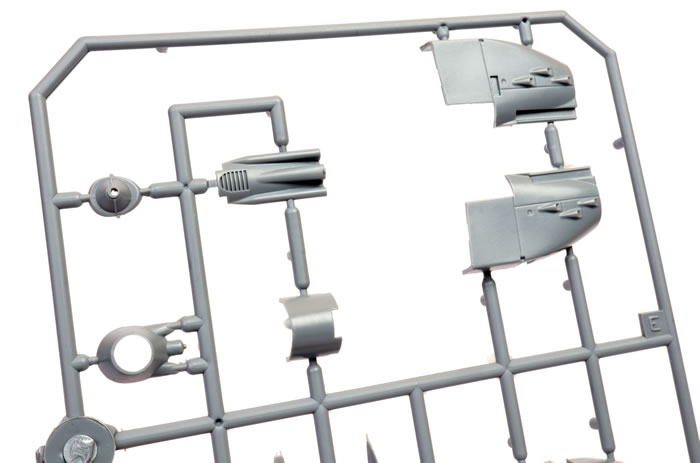
Azur FRROM's 1/72 scale Potez 25 A2/B2 Hispano comprises 140 parts in grey plastic (including 42 parts marked "Not For Use"), five parts in clear (two parts marked "Not For Use"), one photo-etched fret and markings for four aircraft.
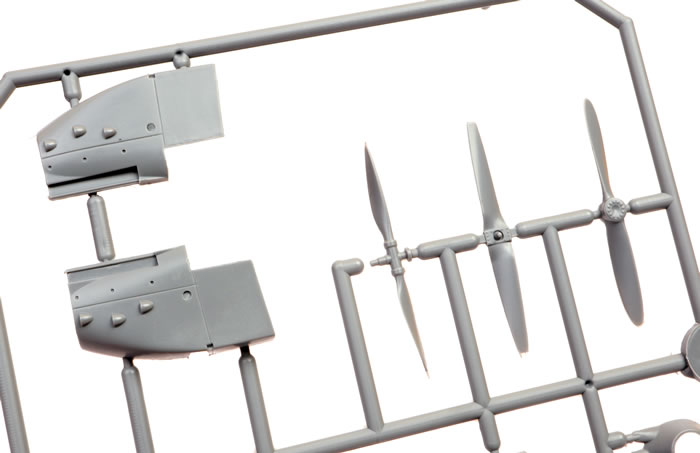
Moulding quality looks very good, with narrow sprue attachments and hardly a hint of flash.
This boxing represents the version powered by the Hispano engine with its distinctive lines.
Being a limited run kit, we are not given the luxury of locating pins for the fuselage and smaller parts so some extra time and attention will be required for parts preparation, planning, alignment of parts (especially all those struts) and assembly.
Surface textures are really well done, especially on the upper and lower surfaces of the wings.
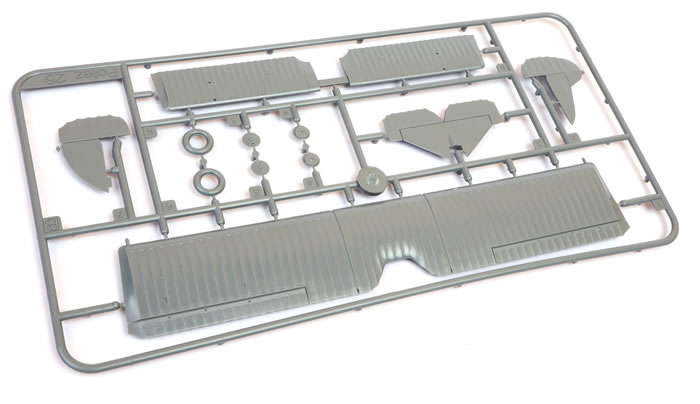
Cockpit detail is good with framework moulded onto the inside of the fuselage halves although, surprisingly, there are no harness straps supplied on the photo-etched fret.
Photo-etched parts are supplied for control surface actuators, spoked wheels and anchor points for rigging. A nice touch is the plastic jig supplied to press the wheel spokes to the correct profile.
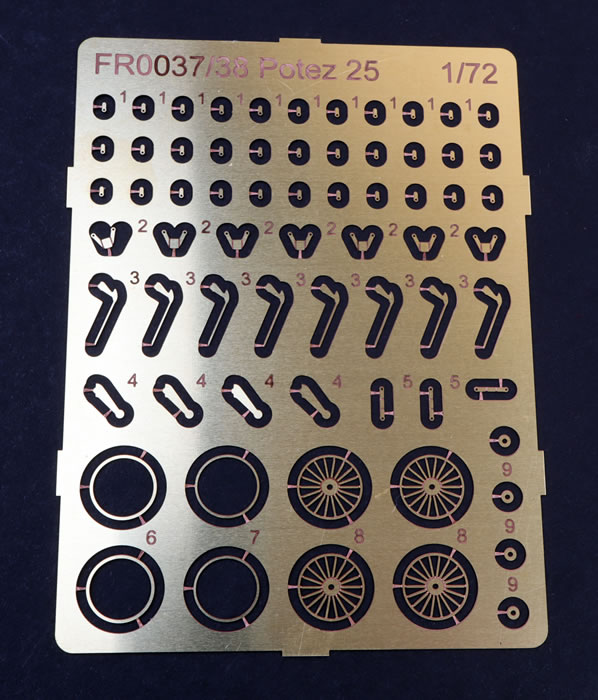
Most of the struts are individual parts but the forward pair of cabane struts are moulded as a single part, helping with alignment of the upper wing and the other struts.
The small clear sprue is well moulded.
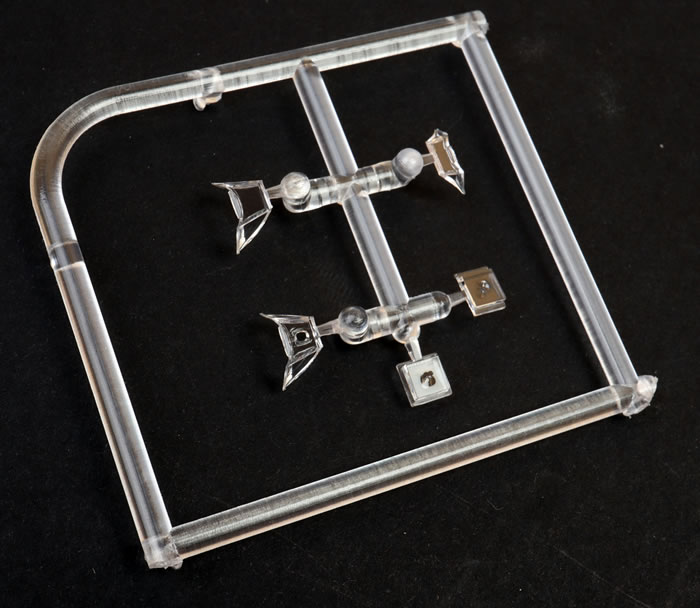
Azure FRROM has supplied nice positive locating holes for the ends of the struts.
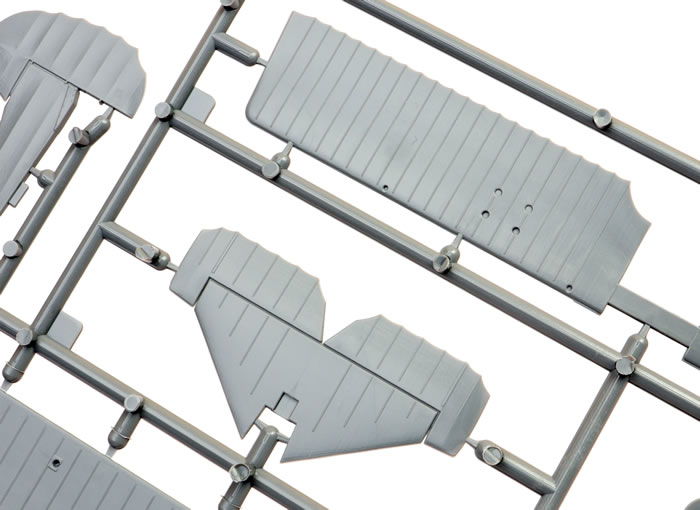
Rigging diagrams are included in the instructions.
Options include two bombs, racks and landing lights under each lower wing, fuel tanks under the upper wings, alternative propellers and a choice of machine gun armament for the observer.
Colours & Markings

Four nicely varied marking options are offered - one Greek, one Romanian and two Yugoslavian.
The decal sheet is well printed, glossy and in register.
This is a very nicely detailed kit of an interesting aircraft type that saw service with a wide range of countries.
The limited-run nature of this kit along with the individual struts and rigging means that this kit will be best suited to experienced biplane modellers, but with time and care you will have an impressive and attractive result..
Thanks to Azur FRROM for the review sample.
Review Text & Images Copyright © 2020 by Brett Green
Page Created 26 March, 2020
Last updated
26 March, 2020
Back to HyperScale Main Page

|
